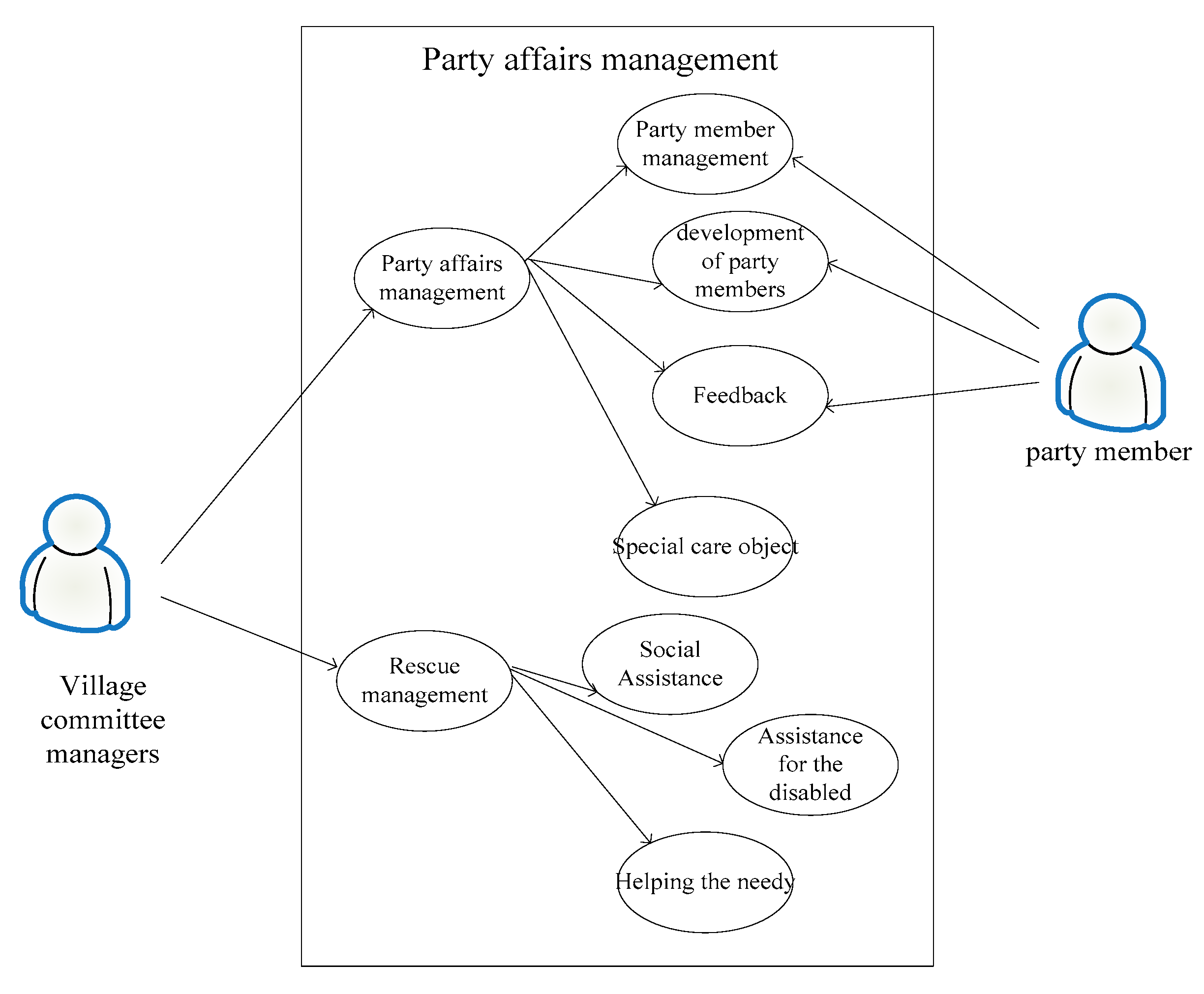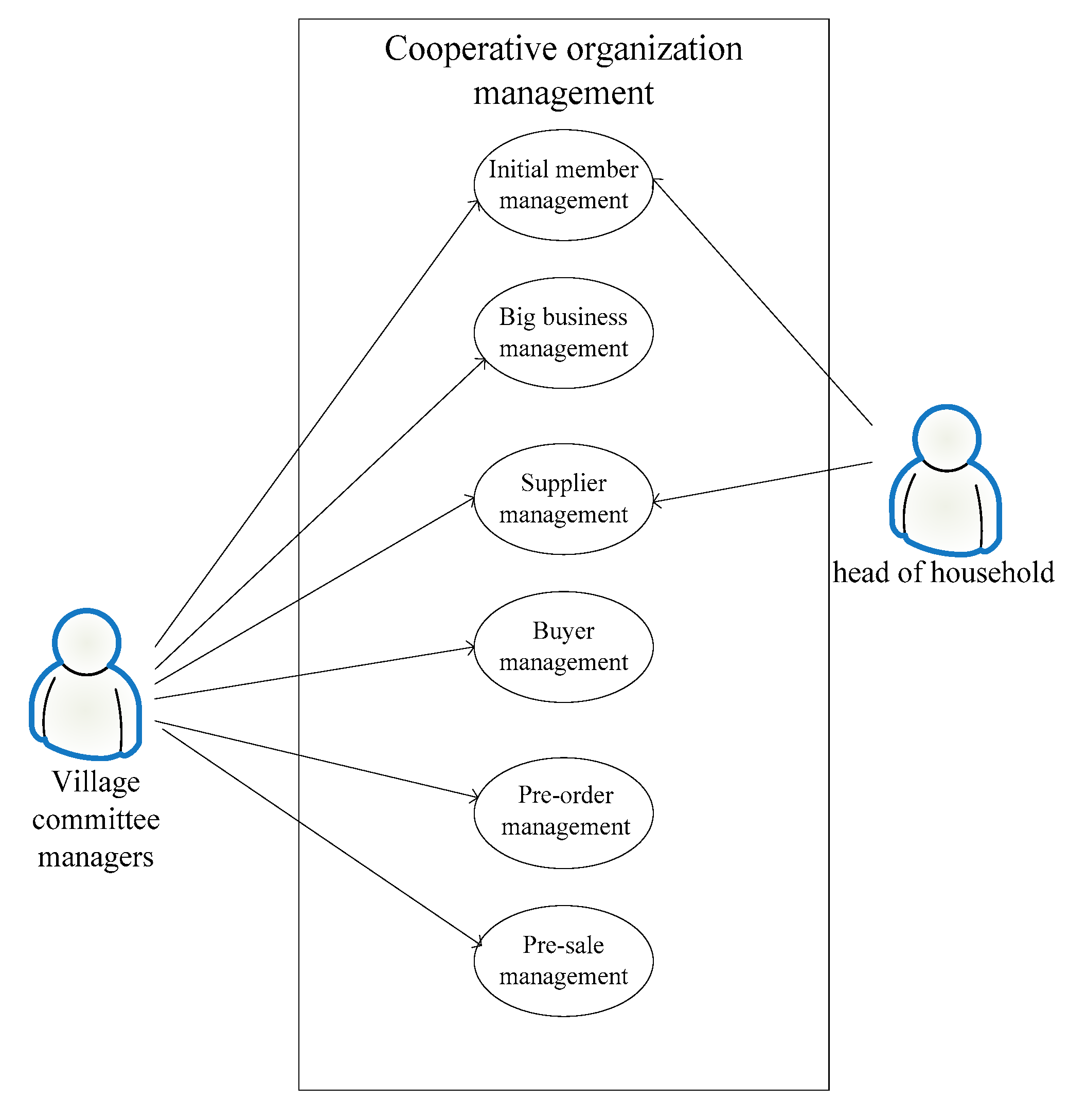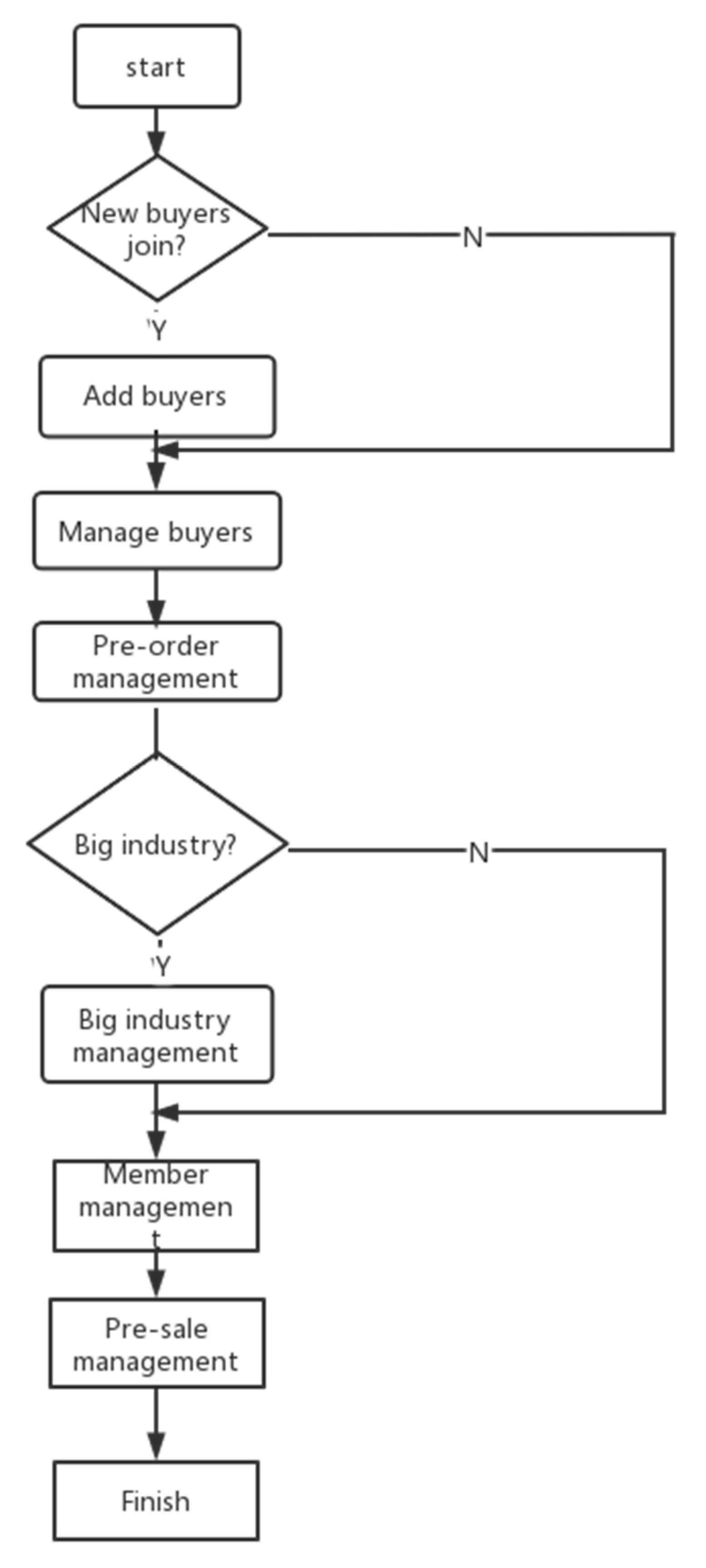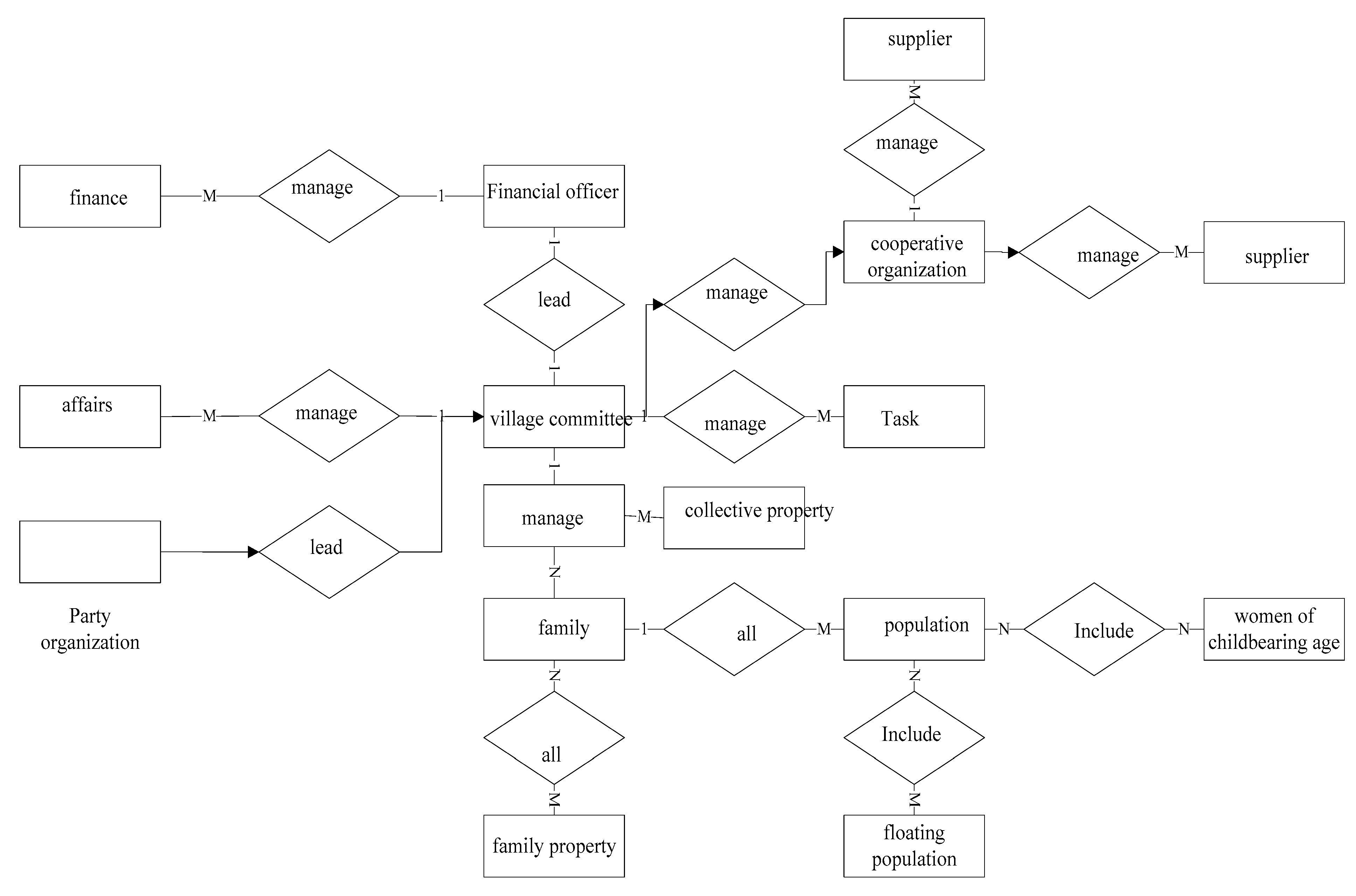Rural management informatization refers to the use of modern information technology and means to integrate, develop, utilize and share rural information, improve the level of rural management and the integrated service of rural resources, and improve the level of rural management and service. This system is based on client/server (C/S) and uses Visual Studio 2008 as the main development platform. The NET framework is a dynamic, interactive development framework. This article uses the C/S model and uses enterprise Visual Studio 2008 as a platform to conduct a comprehensive analysis. The .NET framework is a dynamic interactive application system based on the network. On the basis of an investigation of the system, this paper divides the system into six functional modules: system management, population management, village affairs management, party affairs management, financial management, and collaborative organization management. There are three data and personalization modules, including server–client, that is, the C/S architecture. The C/S architecture is generally divided into two levels. The server is responsible for data management, while the client interacts with the user.
2.2.2. C/S Three-Tier Architecture
The three-tier C/S structure divides the application software into three levels. The basis of partitioning is to logically separate each unit and to clearly divide the functions. The means of splitting is to separate the functions that have nothing to do with the original data layer and logic into the DBMS (Database Management System). The core of the three-level C/S architecture is to divide the two levels into different programs. In the process of division, the interface should be simplified as much as possible [
11].
The three-tier C/S architecture has the following advantages:
In terms of security, the three-level C/S system structure adopts a strict security management mechanism, and has made more complex settings for important application software, user identity, reading, and writing operations. The user authentication mechanism is a hierarchical structure, and corresponding application and data access permissions are set according to different levels. In addition, the three-level structure of the C/S system makes it easy to implement support for various databases, and has good practical value. On the basis of Microsoft’s .NET framework, a general vehicle maintenance management system, is developed, and its architecture is shown in
Figure 1.
In accordance with the above analysis, this project adopts the C/S model. The system adopts a three-level architecture, and further expands and divides the original two C/S architectures to separate the business logic from the data access layer. This not only facilitates operation by the user, but also facilitates the updating and maintenance of the software. The role of modern information technology in rural social governance can not only increase the breadth and depth of villagers’ participation in governance, integrate various governance subjects and governance resources, and fully mobilize the enthusiasm of social forces to participate extensively, it can also promote the optimization of rural social governance structures and strengthen rural social governance. The driving force for sustainable development of rural society. Informatization is changing the form of rural governance. Beautiful Countryside fully considers all aspects of economic and social development and grassroots governance, and applies digital technology to the practical application of rural governance, solving the difficulties and difficulties of rural governance, realizing the sharing of data and resources at the three levels of counties and villages, and committing to promoting the modernization process of rural governance.
2.2.4. Models for Digital Optimization Problems
Almost any kind of optimization problem can be reduced to a mathematical model: to find the maximum value of a set of functions. The optimization problem involves finding the optimal solution under the premise of satisfying the constraints of the system model and the boundary conditions. Its mathematical description is as follows:
- (1)
System model—algebraic equations;
- (2)
System boundary—variable value range;
- (3)
Optimal target—used to measure the optimal indicator, that is, the indicator function;
- (4)
Independent variable—its change would have an impact on the value of the optimal target.
That is to say, the optimization problem involves solving for the optimal solution under the given constraints, so that the maximum value of the exponential function is obtained.
A simple mathematical model of the optimization problem is:
where
refers to the optimal vector and
f refers to the target function.
,
refer to limit functions. Correspondingly,
(
)
and
(
) = 0 denote inequality constraints and equation constraints, respectively, and the equations and inequalities combined are called constraints.
In general, the constraints can be written as:
This method refers to the best control of what kind of target under what kind of constraints.
In this way, the objective function can also be expressed as:
In Formula (4), f is a specific nonlinear function, and represents the ultimate goal of the optimization problem.
Restrictions
- (1)
Control system: represents the specific objective of optimal control and is usually expressed by a controllable system equation:
or it can be expressed as:
Among them, , and u .
- (2)
Limit variables: usually there are two types of constraints: equality and inequality.
The equality constraint is:
where
is a specific nonlinear function, and represents a space of one dimension.
The inequality constraints are:
Inequality constraints can be converted to equation constraints by taking advantage of new variables. When a new variable is introduced into Formula (8), the inequality constraints can be transformed into equation constraints:
Similarly, a new variable is introduced in Formula (9), which can be converted into an equality constraint:
It is easy to prove that Formulas (10) and (11) are equivalent to Formulas (8) and (9). In order for and to be real numbers, the criteria of Equations (8) and (9) must be met.
Objective Function
The objective function is a mathematical expression given according to the purpose to be achieved under the condition that these constraints are met.
- (1)
Linear objective function
There is a linear relationship between these objective functions and the quantities to be solved.
- (2)
Nonlinear objective function
The objective function of this method has a nonlinear relationship with the quantity to be determined.
- (3)
Objective function with integral term
In the optimization design of the dynamic system, the objective function with integral term is often encountered, and its form is:
In Formula (12),
x is the state vector of the control system, and
u is the controlled vector;
is the end time.
S,
f are nonlinear functions, and both methods can reflect the needs of the end point and the moving process [
13].
The selection of the objective function mainly depends on the main contradiction and control quality of the optimization problem. At the same time, considering the concerns of designers, the same problem would also lead to changes in the objective function, so a clear and unified objective function model cannot be given. Only a comprehensive model can be given, and then trade-offs and modifications can be made in practice.
















